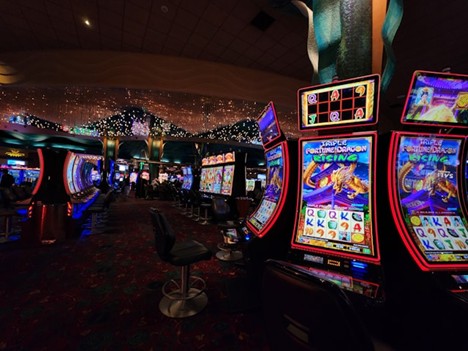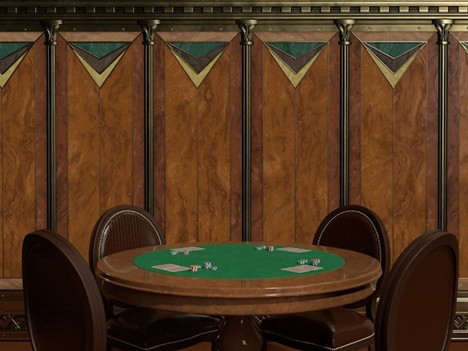
Have you ever stepped into a space only to completely lose your sense of time? If it's an immersive entertainment venue, or a high-energy event space, some environments are designed to make hours pass like minutes.
By eliminating visual cues like clocks or natural light, these spaces leverage psychological and neurological responses that subtly encourage guests to stay, engage, and return. Below, we dive into the science behind why time seems to disappear in certain environments; from casinos to modern entertainment halls, these spaces are engineered to keep you comfortably immersed for longer than you might expect.
Humans rely on external markers such as clocks and daylight cycles to regulate how long we engage in an activity. When these cues are removed, our internal sense of duration weakens. Without visible signs of time passing, the brain has fewer reference points, leading to temporal disorientation.
In spaces where extended engagement enhances enjoyment, creating a relaxed, timeless atmosphere is an essential part of delivering a seamless and immersive experience.
The timeless environment fuels what psychologists call the 'flow state', which is a deeply absorbed mental state in which tasks become effortless and time seems to dissolve. In high-velocity, risk-reward settings, the interplay of anticipation and results triggers dopamine release. That chemical creates a feedback loop: more immediate satisfaction, more engagement, more willingness to stay.
With no clocks or windows to anchor consciousness, the mind is free to focus on activity and reward. Time becomes secondary. Each moment is about the next experience, not what hour it is on the clock.
Several architectural and sensory choices reinforce this effect:
Absence of daylight: Eliminating natural light removes circadian anchors.
Neutral or muted décor: Minimizing symbols like calendars or navigational signage reduces mental reminders of routine life outside the space.
Ambient audio: Steady background sound can mask cues of passing time.
Controlled lighting: Variable brightness and shimmer create a floating sense of awareness that is soft yet engaging.
These sensory strategies work together to create suspension. The longer someone remains in this space, the more invested they become.
Beyond sensory appeal, thoughtful design elements keep guests engaged and entertained:
These features tap into our natural enjoyment of patterns, progress, and surprise that creates an environment where time feels well spent and entertainment stays fresh.
Designing immersive, time-neutral environments can enhance guest enjoyment and create more memorable experiences. However, thoughtful consideration is key to ensuring that this engagement remains healthy and positive:
Empowering Awareness: By gently encouraging time mindfulness, guests can stay informed and in control of their experience.
Responsible Innovation: In many regions, guest care is part of a broader regulatory and ethical framework. Embracing these standards builds trust and long-term loyalty.
Ultimately, the most successful spaces are those where guests feel both immersed and respected. When fun meets foresight, everyone wins.

The psychology behind timeless spaces extends to a variety of settings that aim to elevate experience and deepen engagement. High-end retail stores, for example, often design layouts that subtly discourage awareness of time, encouraging visitors to linger, explore, and connect with the brand.
Similarly, virtual experiences and gaming lounges use seamless digital flow to immerse users so completely that hours can feel like minutes. Even creative coworking spaces and studios sometimes remove visible clocks to foster a sense of uninterrupted focus and spark innovation.
Across all these examples, the same thoughtful design principle applies: by gently minimizing time cues, these environments enhance presence, promote deeper involvement, and create more memorable, fulfilling experiences.
Thoughtfully crafted experiences can remain immersive while still respecting and supporting user autonomy. One way to achieve this is by offering visible time cues upon request, such as placing clocks near exits or allowing guests to use their personal devices as temporal anchors.
Encouraging regular breaks can also be helpful, whether through subtle reminders, designated rest zones, or gentle prompts that help visitors reorient themselves. Staff training plays a critical role as well; team members should be equipped to recognize signs of disorientation, fatigue, or overstimulation, particularly among guests who stay for extended periods.
Transparency is equally important. Setting clear expectations through marketing materials or on-site signage ensures that guests understand the nature of the environment they are entering, helping to avoid confusion or unintended consequences. When these thoughtful measures are in place, immersive design and responsible guest care can coexist in a way that enhances enjoyment while promoting well-being.
Spaces intentionally designed without visible time cues tap into powerful neural patterns that naturally enhance focus and engagement. This thoughtful approach, used in everything from dynamic entertainment venues to innovative workspaces, supports the kind of immersive flow that makes experiences truly memorable.
By carefully guiding attention through sensory elements and subtle behavioral reinforcements, these environments help people stay present, inspired, and energized.